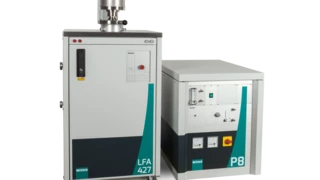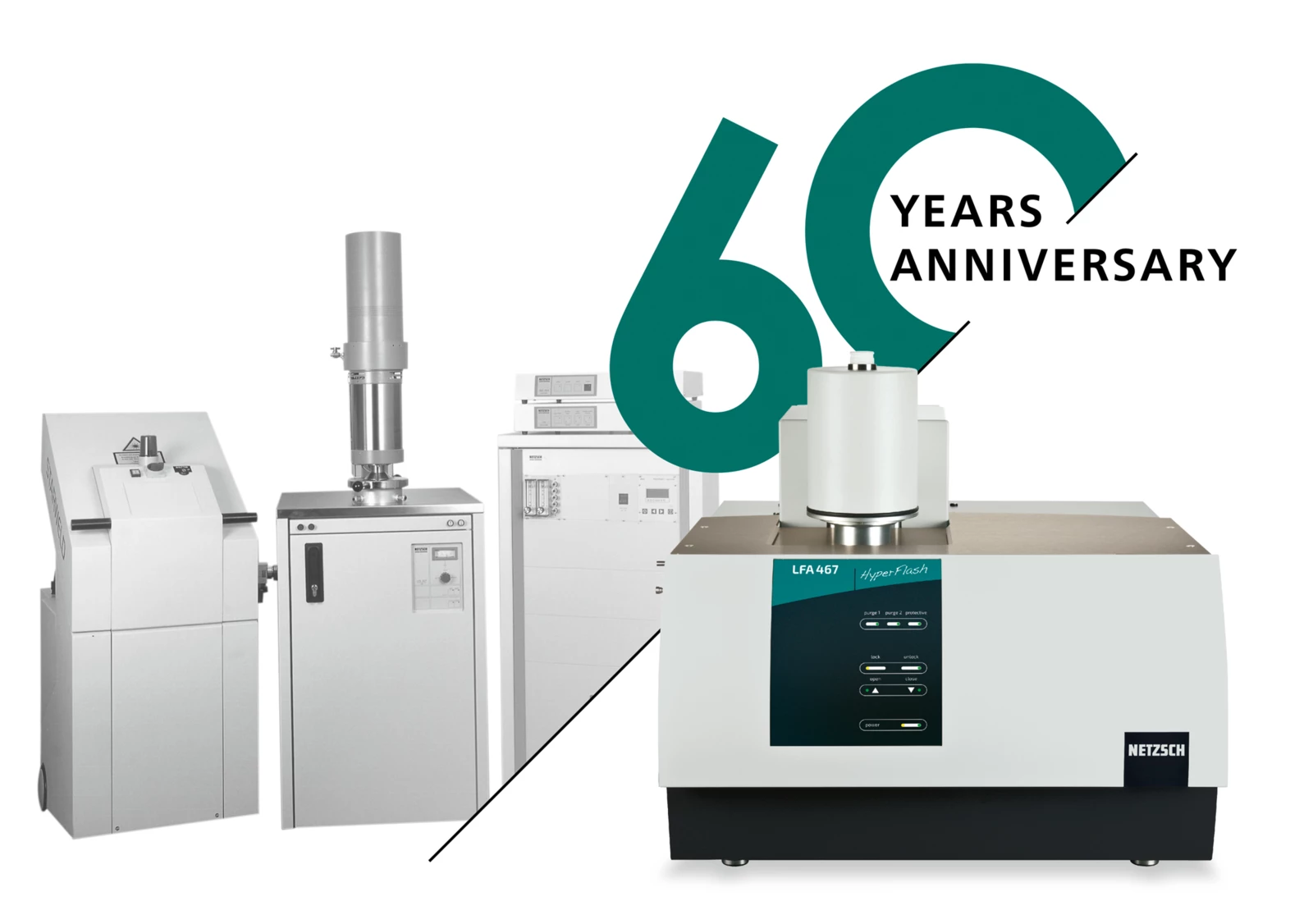
29.09.2022 by Aileen Sammler
60 Years of NETZSCH-Gerätebau: The LFA in Use for Space Applications
In September it is all about Laser Flash Analysis. We are proud to present a field report by our long-standing customer, the Austrian Foundry Institute. Read about the LFA in use at the Austrian Foundry Institute – Thermophysics for Space Applications.

The LFA in Use at the Austrian Foundry Institute
The Österreichische Gießerei-Institut (ÖGI; Austrian Foundry Institute) is the joint research institute of the Austrian foundry industry with about 40 employees. It handles issues in the foundry industry as well as the metals-technology industry. Its research offerings include R&D, technical consulting, material testing, material and component investigation, industrial computer tomography, numerical simulation and specialized training.
"ÖGI is accredited as a testing center for 26 test methods in accordance with EN ISO/IEC 17025. In the thermophysical laboratory, material parameters such as Thermal ConductivityThermal conductivity (λ with the unit W/(m•K)) describes the transport of energy – in the form of heat – through a body of mass as the result of a temperature gradient (see fig. 1). According to the second law of thermodynamics, heat always flows in the direction of the lower temperature.thermal conductivity, thermal expansion and heat capacity are determined up to very high temperatures. The data is of great importance for any material development application, but also serves as essential input parameters for computer simulations.
However, the range of materials in the thermophysical laboratory is not limited to metallic alloys characterized in the solid and liquid state. These include sand-based molding materials used in the foundry industry, building materials such as gypsum, various woods or wood-based materials, glass varieties and ceramic materials.
One prerequisite in covering such a wide range of materials is to have particularly reliable measuring instruments. To this end, ÖGI has been working together with NETZSCH-Gerätebau for decades. All of the instruments in the ÖGI thermophysical lab have proven themselves through use over an extraordinarily long period of time, usually around 20 years. Among these are two LFA 427 systems, the first one in operation there since 2003 and the second since 2015. Another advantage of the systems by NETZSCH-Gerätebau is the long-term availability of spare parts in combination with excellent and fast-responding service.
Materials for Space Applications
Materials for space applications have also become an important part of ÖGI’s materials spectrum. ÖGI is involved in various international research projects and collaborations. A wide range of materials is tested, including metallic alloys and carbon fiber-reinforced plastics used in satellites and rocket stages. Every week, several tons of material from abandoned spacecraft enter the Earth’s atmosphere. The problem here is the uncontrolled disintegration of such spacecraft debris. International agreements now require either controlled re-entry or risk assessment for uncontrolled crashes for each new take-off into low Earth orbit. Numerical simulations of thermal and mechanical loading or burn-up during re-entry are performed for risk assessment. For improved prediction capability, valid material data up to very high temperatures or down to the molten phase is needed. ÖGI has been able to make significant contributions to the characterization of these materials.
Ceramic fabrics and graphite foams, however, are particularly challenging to characterize. These are used as layer composites for inflatable heat-protection shields (Advanced Inflatable Thermal Protection Systems) for Earth and future Mars missions.
Since knowledge of the material characteristics is needed for temperatures far above 1000°C, only the laser flash method can be employed; it is the only instrument capable of determining Thermal DiffusivityThermal diffusivity (a with the unit mm2/s) is a material-specific property for characterizing unsteady heat conduction. This value describes how quickly a material reacts to a change in temperature.thermal diffusivity into the high-temperature range. Two LFA 427 systems by NETZSCH-Gerätebau are used at ÖGI for this. The advantage of the laser flash method lies not only in its wide temperature range, but also in its ability to measure values for fabrics and graphite foams under different pressures and gas atmospheres.
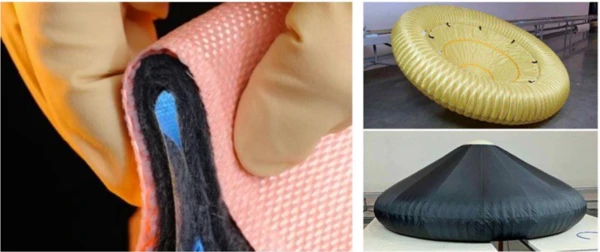
Measurement methodology and evaluation must rise to demands placed not only by issues such as the production of suitable samples, the hard-to-define thickness of fabrics and graphite foams, and partial inhomogeneity, but also to those placed by the porosity of materials. In the following example, a graphite foam and an aerogel were tested in an argon atmosphere. Figure 3a) shows the measurement signal (blue) over time for a graphite foam; figure 3b) for an aerogel. Due to the porous structure of the two materials, the laser pulse is no longer entirely absorbed at the surface. To account for the absorption of the laser pulse in the pore structure, the penetration model of the NETZSCH Proteus®Ò LFA software is employed in both cases. To minimize parasitic heat-flux effects, an end of the range of curve fitting (red) is selected shortly after the maximum. In the case of radiolucent materials, such as aerogels, the initial signal is not taken into consideration in the evaluation.

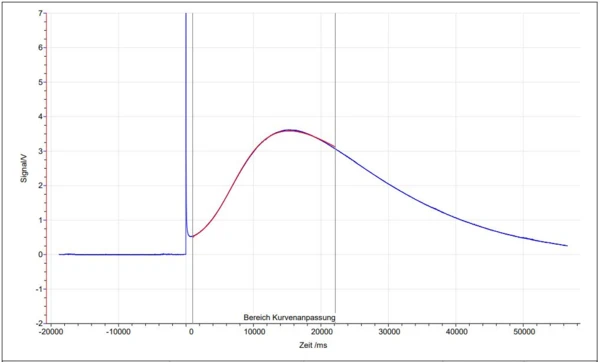
Along with the thermophysical characterization of different fabrics and graphite foams, the thermophysical measurements are supplemented with application-related tests. In order to test the thermal capacity of the layered composites, these are thermally stressed at the ÖGI test foundry at temperatures over 1000°C, as planned for the Mars landing. In a system of thermal protective layers, thermocouples are integrated between the individual layers. By means of a graphite crucible with copper melt, the composite of thermal protective layers can then be suddenly thermally loaded at approx. 1100°C (figure 4a)). The temperatures between the layers are measured, allowing for determination of the heat flow through the layer system. For thermal insulation from the environment, the layer system is placed during the experiment into a mold, consisting of a ceramic frame for fixation and a sand-based molding material with low Thermal ConductivityThermal conductivity (λ with the unit W/(m•K)) describes the transport of energy – in the form of heat – through a body of mass as the result of a temperature gradient (see fig. 1). According to the second law of thermodynamics, heat always flows in the direction of the lower temperature.thermal conductivity from an in-house 3-D printer (figure 4b)). The measurement results of the experiments are in very good agreement with the numeric simulation in which the results of the LFA measurements for the individual thermal protective layers are implemented (figure 5)."
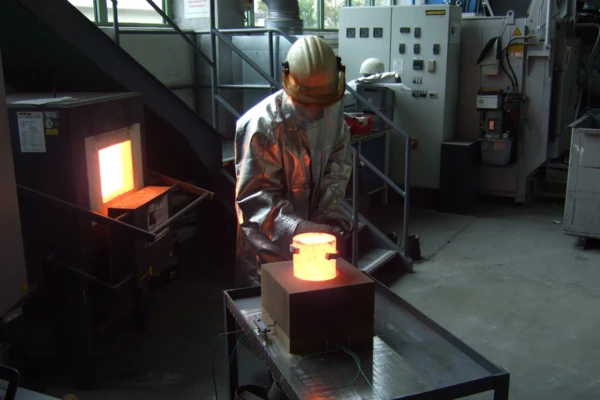


Many thanks to the Austrian Foundry Institute in Leoben for this very interesting report.
We look forward to many more years of successful collaboration!
